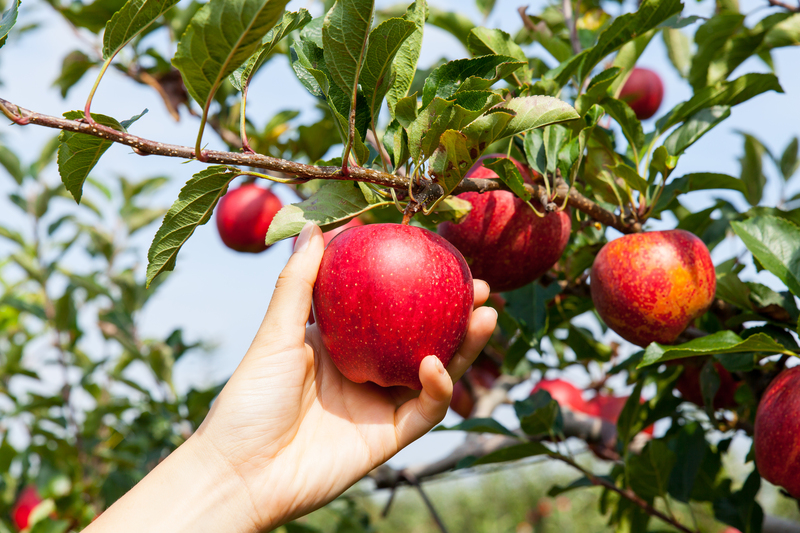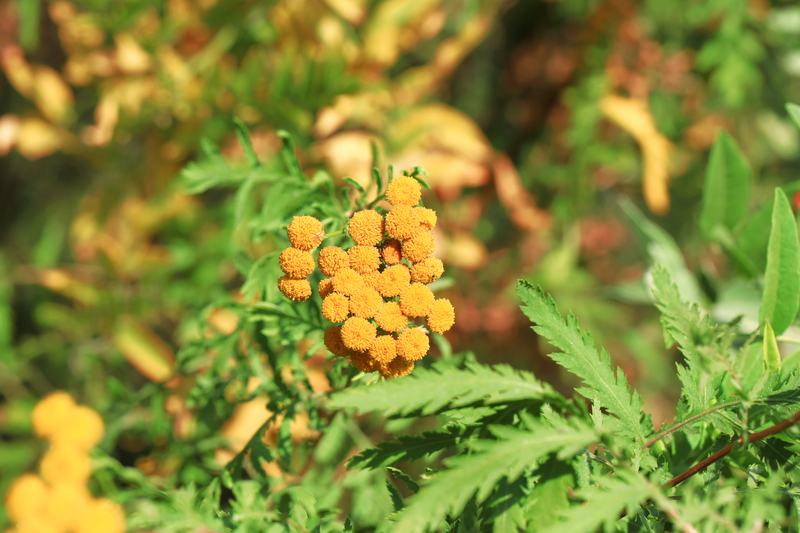The Timeless Art of Gardening: A Climate Change Solution
Posted on 22/08/2025
The Timeless Art of Gardening: A Climate Change Solution
In an era marked by rapid environmental change and escalating global temperatures, the act of gardening emerges as more than just a delightful pastime. Today, gardening as a solution to climate change is being recognized as a powerful tool for environmental restoration, sustainability, and climate resilience. In this comprehensive guide, we delve into the many ways that the age-old practice of horticulture can combat the climate crisis, promoting personal health, community engagement, and a healthier planet.
Understanding the Link: Gardening and Climate Change
Climate change refers to significant, long-term shifts in temperatures and weather patterns. Primarily fueled by human activities--especially the burning of fossil fuels--these changes pose severe threats to ecosystems, food security, and our daily lives. Against this daunting backdrop, the timeless practice of gardening offers tangible ways to lower carbon footprints, restore biodiversity, and build climate resilience.
Why Gardening Is a Powerful Climate Change Solution
- Carbon Sequestration: Plants capture carbon dioxide (CO2) from the air, storing it in their leaves, stems, and especially roots. By expanding green spaces, gardens help draw down atmospheric CO2, one of the main contributors to global warming.
- Biodiversity Enhancement: Diverse gardens support pollinators, birds, and beneficial insects, contributing to ecosystem balance and resilience.
- Urban Cooling: Gardens absorb heat and provide shade, reducing the urban heat island effect in congested cities.
- Reduced Food Miles: Homegrown produce cuts down transportation emissions, packaging waste, and promotes seasonal, local eating.
- Water Management: Thoughtful gardening practices can improve soil health and help retain water, making urban and suburban environments less prone to drought and flooding.

The Historical Perspective: The Enduring Art of Gardening
The history of gardening stretches back thousands of years. Across continents and cultures, humanity has shaped the land to grow food, heal, and find peace. From the lush hanging gardens of Babylon to medieval European cloisters and East Asian tea gardens, gardening has always combined artistry, ecology, and personal well-being.
What makes gardening timeless? It is the unique ability to connect us with nature while nourishing both body and spirit. In our contemporary context, gardening's role as a solution to climate change gives it renewed and urgent relevance.
Modern Gardening Techniques for Climate Action
1. Permaculture and Regenerative Gardening
Permaculture is a sustainable design system rooted in observing nature and replicating its patterns and principles. Regenerative gardening builds upon this, seeking not just to sustain but actively restore degraded soils and ecosystems. Both focus on minimizing fossil fuel inputs, conserving water, encouraging biodiversity, and building resiliency against climate impacts.
- Companion Planting: Growing mutually beneficial plant species side by side to naturally deter pests and enhance growth.
- Composting: Returning kitchen scraps and yard waste to the soil builds organic matter and sequesters carbon.
- Mulching: Applying organic materials to suppress weeds, conserve moisture, and moderate soil temperature, which enhances carbon storage.
2. Urban Gardening: Greening Cities
With over half the world's population now living in urban centers, urban gardening is crucial in the fight against climate change. Balconies, rooftops, community lots, and even vertical walls can host edible and ornamental plants, creating green oases throughout the city.
- Rooftop Gardens: These insulate buildings (reducing energy needed for heating or cooling) and reduce stormwater runoff.
- Community Gardens: Strengthen food security, foster social connections, and serve as vital urban habitats for pollinators.
- Vertical Gardens: Transform bare walls into living landscapes, improving air quality and aesthetics.
3. Native Plant Gardening and Restoration
Native plants are well-adapted to local climates and require less water, pesticides, and fertilizers than non-native species. By landscaping with natives, gardeners protect local wildlife, stabilize soils, conserve water, and reduce maintenance needs. Restoring natural ecosystems through gardening helps buffer communities against climate extremes and supports pollinators vital for food crops.
The Scientific Case: How Gardening Mitigates Climate Change
Gardens as Carbon Sinks
Perhaps the most significant way in which gardening addresses climate change is through carbon sequestration. Trees and perennial plants lock carbon into their biomass and, critically, into the soil. Gardens with rich, healthy soils act as carbon sinks, offsetting emissions from other sources.
- Deep-Rooted Plants: Perennials and trees store carbon underground for decades or even centuries.
- Soil Microbes: Healthy soils teem with life. Fungi and bacteria help store carbon as stable organic matter, keeping it out of the atmosphere.
Reducing Greenhouse Gas Emissions
When you grow your own food, you cut down dramatically on emissions associated with industrial agriculture and long-distance transportation. Every tomato, lettuce, or herb grown at home eliminates the need for trucking, refrigeration, and packaging that produce demands when shipped from afar.
Additionally, gardens managed organically or with minimal inputs release fewer greenhouse gases compared to chemically intensive lawns or monocultures.
Improving Microclimates and Resilience
Gardens cool their surroundings, filter pollutants, absorb rainwater, and shield communities from extreme weather. During heatwaves, leafy plants lower air temperatures through transpiration. After storms, healthy soils and deep roots soak up excess water, reducing runoff and flood risk.
Personal and Societal Benefits of Climate-Friendly Gardening
Health and Well-being
Gardening for climate resilience also means gardening for our own health. Studies show that time spent nurturing plants can lower stress, improve mood, ward off depression, and boost immunity. Fresh, homegrown foods are more nutritious and free from harmful chemicals.
- Physical Exercise: Digging, planting, and harvesting keep you active and outdoors.
- Mental Health: Gardening provides mindful relaxation and a sense of accomplishment.
- Food Security: In uncertain times, growing even a small amount of produce brings peace of mind and dietary diversity.
Strengthening Communities
The art of gardening transcends private plots, becoming a tool for social change. Community gardens unite neighbors, teach sustainability to children, provide food for the underprivileged, and preserve cultural knowledge about plants and ecosystems. In the face of climate-related disruptions, such networks build stronger, more resilient communities.
Steps to Begin Your Climate-Smart Garden
- Assess Your Site: Understand your local climate, soil conditions, and sunlight availability before planting.
- Start Small: Even a few containers of herbs or vegetables on a balcony make a difference--every plant counts in the fight against climate change.
- Choose Native and Perennial Species: Prioritize resilient, climate-adapted species that thrive with minimal inputs.
- Compost and Mulch: Return nutrients to the soil, reduce methane emissions from landfills, and build organic matter for carbon storage.
- Avoid Chemicals: Rely on integrated pest management, beneficial insects, and natural fertilizers to keep your garden healthy and eco-friendly.
- Conserve Water: Use rain barrels, drip irrigation, and drought-tolerant plants to save water and protect water resources.
- Engage Your Community: Share seeds, knowledge, and harvests with neighbors to spread the benefits of climate-friendly gardening.
Incorporating the Art of Gardening into Daily Life
Gardening at Home
You don't need acres of land to make an impact. Windowsills, patios, rooftops, and balconies can each host thriving gardens. Herbs, salad greens, tomatoes, and even dwarf fruit trees grow well in containers. Indoors, houseplants purify the air and boost well-being.
Participating in Community Green Spaces
Seek out or help establish community gardens, pollinator corridors, or urban tree planting projects. These collective efforts magnify individual action and transform neighborhoods into greener, healthier, and more climate-friendly places.
Promoting Gardening in Schools and Public Spaces
Teaching the next generation about sustainable gardening practices builds future climate stewards. School gardens double as outdoor classrooms, fostering curiosity about the environment, food, and local ecosystems.
Challenges and Considerations in Climate-Responsive Gardening
Adapting to Climate Uncertainty
Climate change brings unpredictable weather: droughts, flooding, shifting seasons, and new pest pressures. The art of resilient gardening involves experimenting with new crops, diversifying your plant palette, and staying informed about local climate projections.
Addressing Equity and Access
Not everyone has equal access to green spaces or garden resources. Advocating for equitable distribution of public land, soil, seeds, and water ensures that gardening as a climate solution is accessible to all.

The Future of Gardening as a Climate Change Solution
As cities grow and the climate changes, the call for climate-smart gardening becomes ever more urgent. Innovations abound: smart irrigation systems, green roofs, edible landscapes, and pollinator-friendly corridors all point to a future where humans live in harmony with their environment.
Will you join the movement? Every seed sown, every compost pile turned, and every flower that feeds a bee is a step toward healing our shared planet.
Take Action: Become a Climate-Smart Gardener Today
- Start a garden, no matter the size.
- Share your success. Inspire friends and family to grow their own climate-friendly patches of green.
- Advocate for policies that support green infrastructure and food sovereignty in your community.
Conclusion: The Profound Impact of Gardening for Climate Change
The timeless art of gardening isn't just a nostalgic retreat--it's a contemporary solution to some of our most pressing environmental challenges. By embracing gardening as a tool against climate change, we invest in a greener, cooler, and more sustainable future for ourselves and generations yet to come. Whether you're tending roses, vegetables, or wildflowers, your garden is much more than a backyard paradise. It's a living testament to hope, healing, and climate action.
Plant a seed today--help sow the future.

